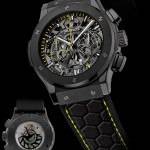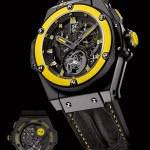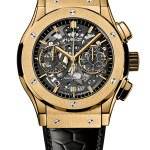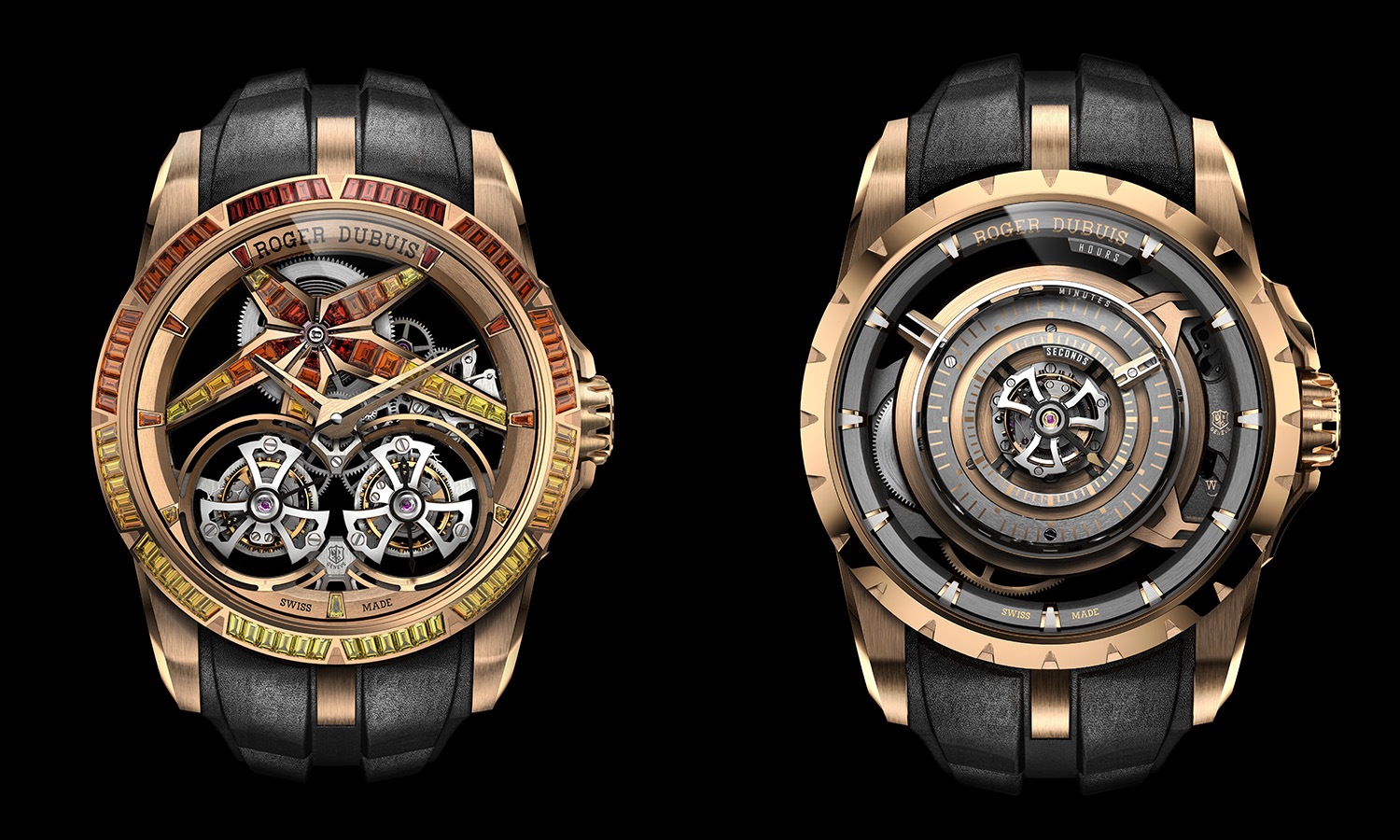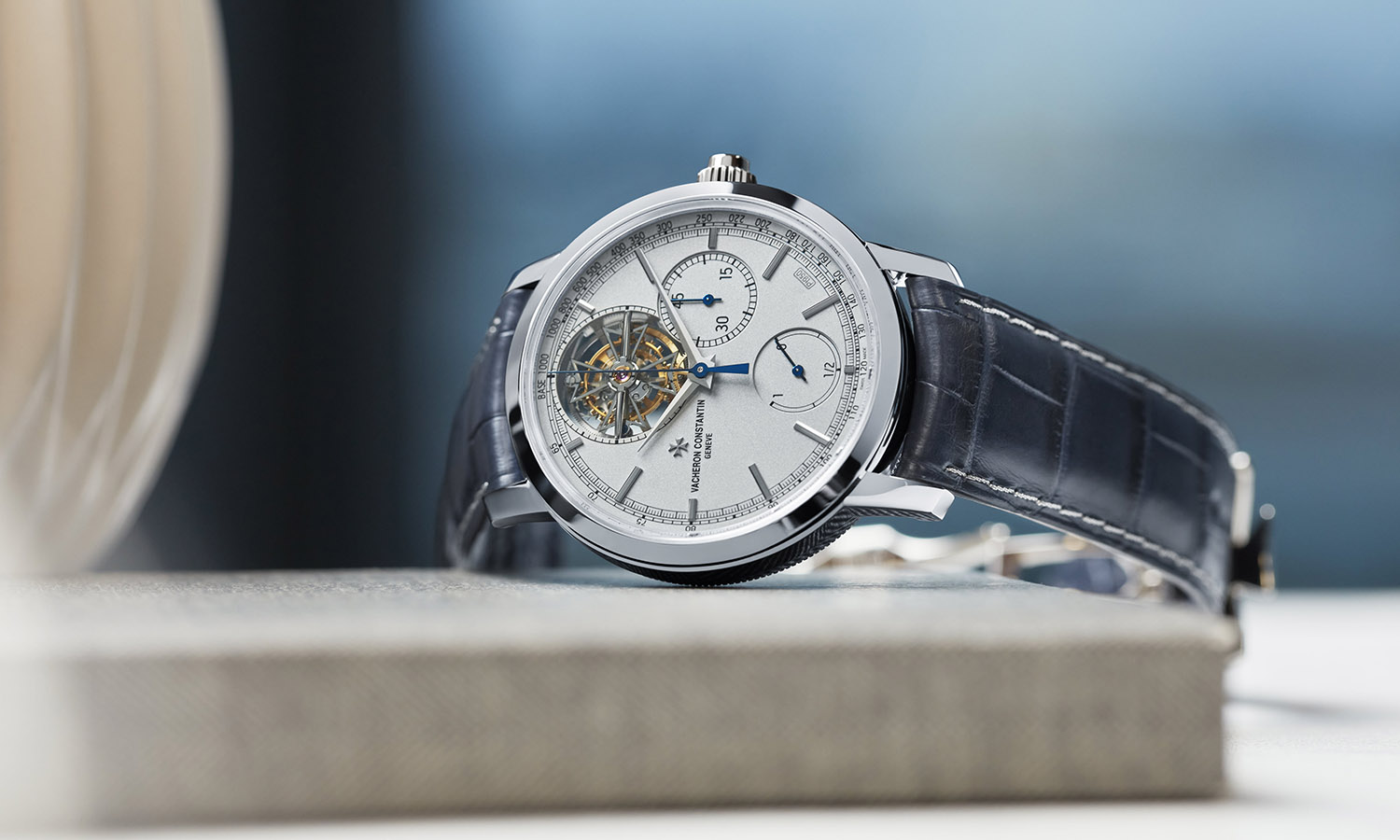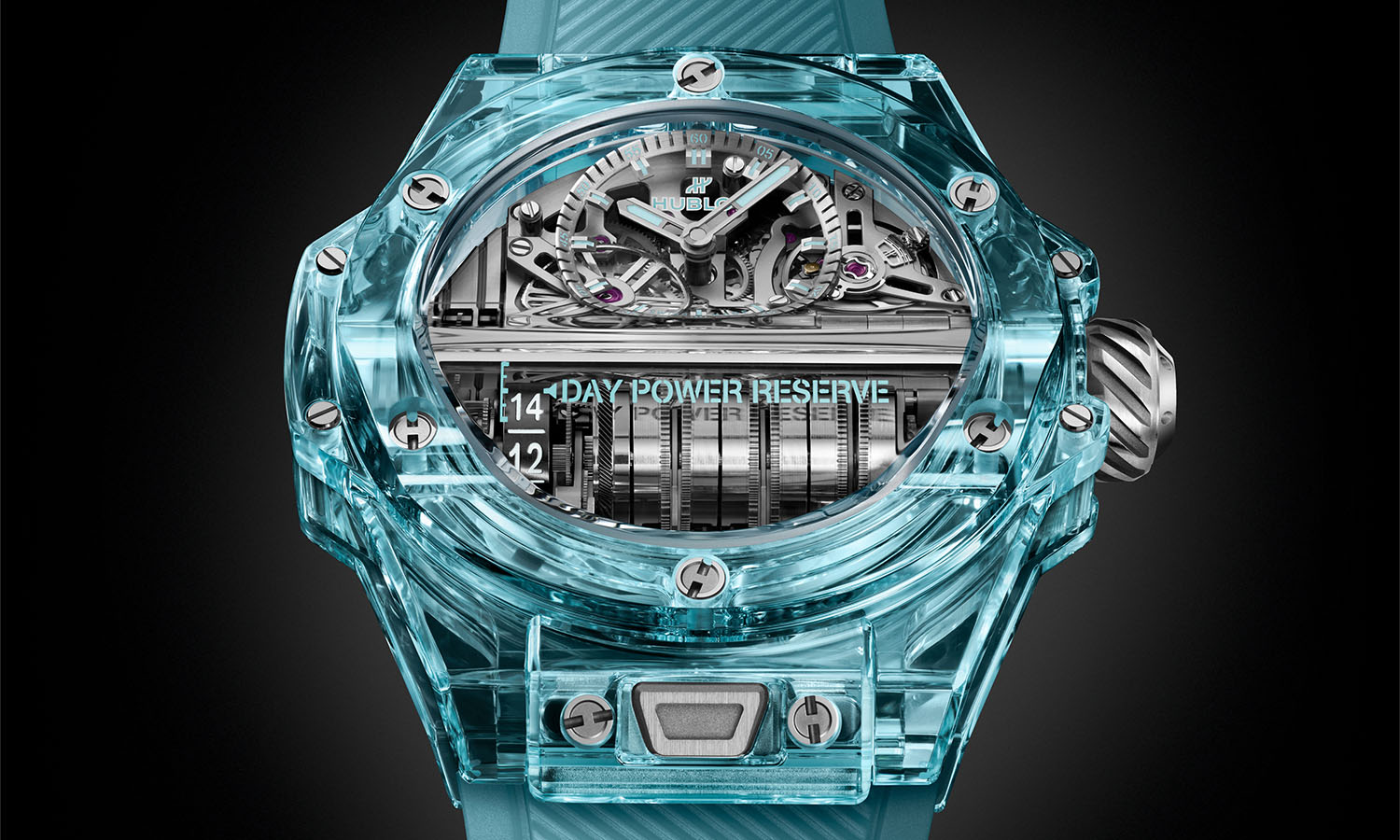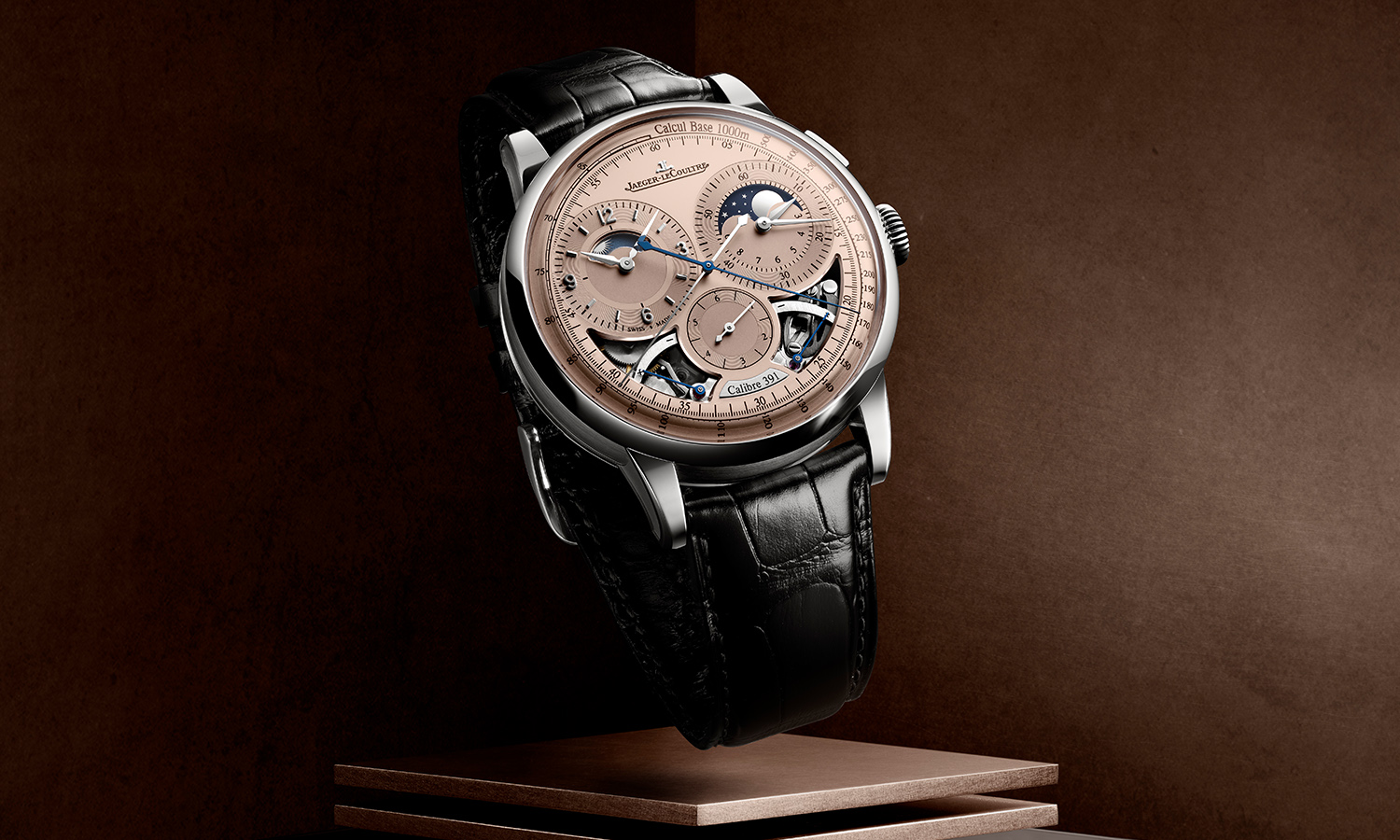
Hail Pele: The Soccer Legend
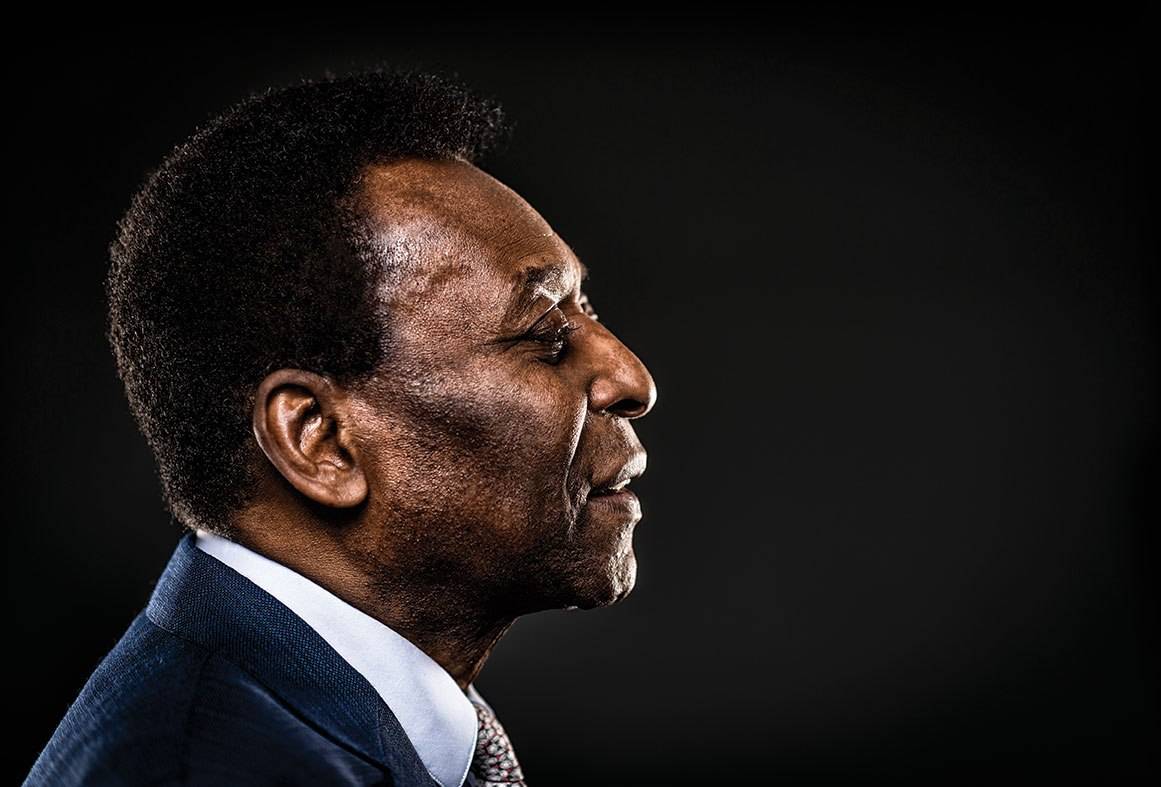
It’s hard to fathom just how big Pelé was at the peak of his career, but if you can imagine Tiger Woods, LeBron James, Michael Phelps, and Rafael Nadal all rolled into one superlative superstar, you start to get the idea. Lauded by many as the greatest soccer player of all time, Pelé elicits fervor even today. If he steps out without a hat to hide his famous face, crowds form instantaneously. No doubt his enduring popularity has something to do with the decades-long span of Pelé’s career, and his devotion to his fans. “I started to play young. I played in my first World Cup when I was 17, so I have almost three generations of followers. That could be the reason,” Pelé explains. “I try not to make mistakes, I try not to disappoint them, and I think maybe that is the reason people still follow me now.” In his homeland of Brazil, Pelé is considered a national treasure — literally. When European soccer clubs tried to woo Pelé away after his debut at the 1958 World Cup, the Brazilian government declared Pelé a national treasure to prevent his export. As a result, Pelé spent the majority of his career playing for Santos FC, where he scored 619 goals and lead the Brazilian club to two championships.
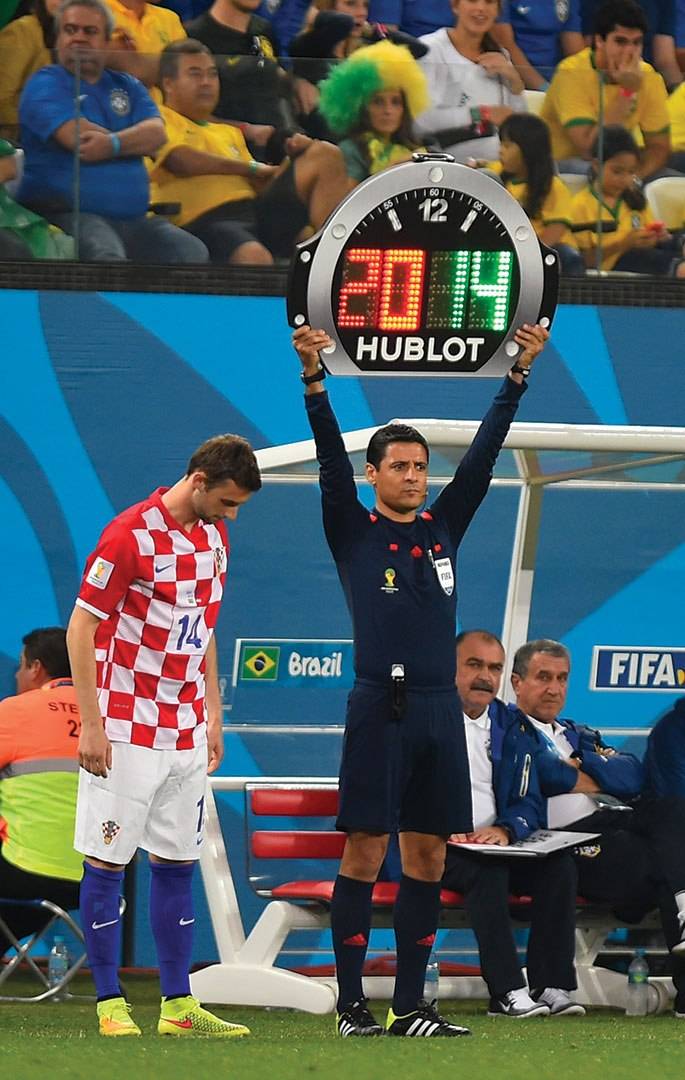
Pelé also led Brazil’s national team to a record three FIFA World Cup victories, in 1958, 1962, and 1970. “Almost all of the Brazilian players on the [current] national team have played in Europe,” notes Pelé who, despite playing all around the world, says his biggest regret was never making it to Wembley Stadium in London, which he calls “the cathedral of football.” Although his career remained firmly rooted at home, Pelé was at a time the world’s highest paid athlete, and he became a beloved brand around the world, second only to Coca-Cola in some countries. In fact, in 1967, belligerents of the Nigerian Civil War agreed to a 48-hour ceasefire, solely in order to watch Pelé play at an exhibition game in Lagos.
It wasn’t until the tail end of his career that Pelé left Santos FC, heading to the United States to play with the New York Cosmos from 1975 to 1977. The move got him out of his retirement from Brazilian club soccer, and gave Pelé two more years playing the sport he loves. Pelé’s tenure with the Cosmos also served as something of a diplomatic mission, helping to increase soccer’s popularity across the US. “My best decision was to go to the United States and play with the New York Cosmos. There, football was [just] beginning and I could promote it,” he says. “That was the best time because I stayed in the game with passion.”
Although soccer, or ‘fùtbol,’ has never quite joined the realm of basketball, baseball, and American football in terms of popularity in the US, Pelé can take credit for its burgeoning presence in the country, especially the prevalence of youth soccer. “[I think] the base is much more organized here than in Brazil, maybe even [more] than in the whole of South America,” Pelé says. “In the US, from ages eight to 20, a lot of kids play soccer — I helped [with that]. Then I helped the girls, and the girls here have become the best in the world.” For Pelé, there is no better sport for youth to get involved with than soccer. “The biggest family in the world is soccer,” Pelé says.
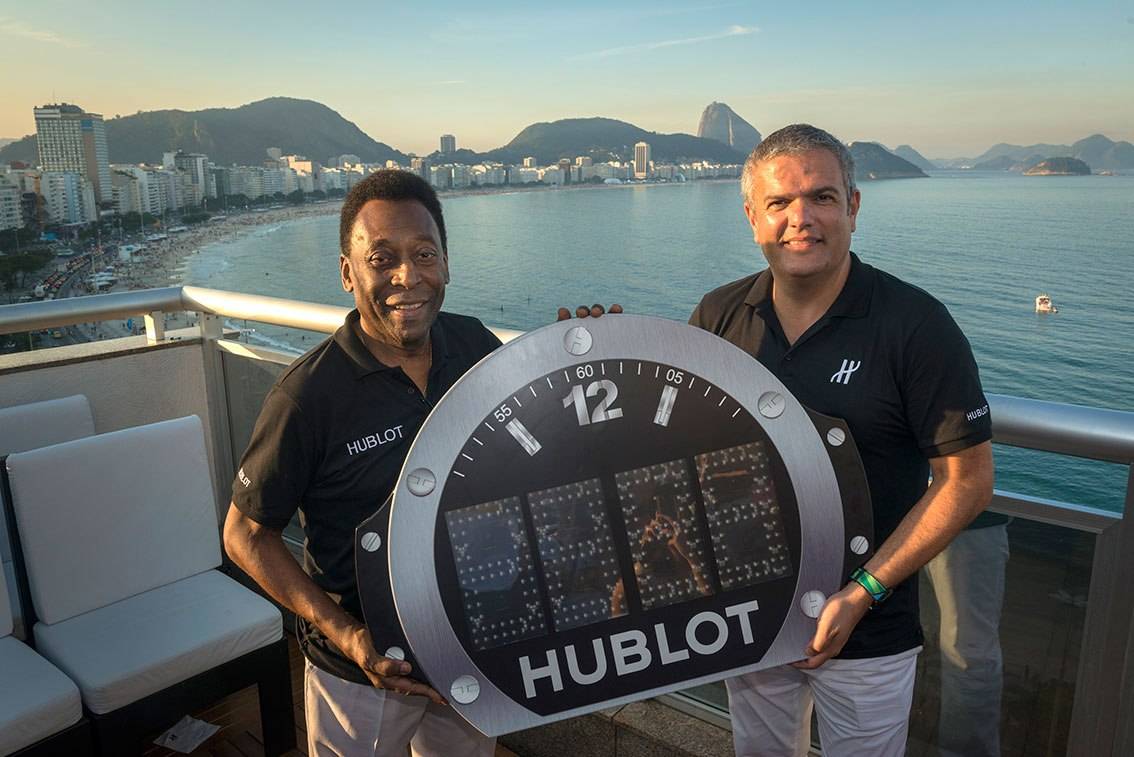
at the Hublot Palace in Rio de Janeiro.
Since Pelé’s trailblazing time with the Cosmos, stateside soccer has been bolstered by the arrival of stars like David Beckham, who finished his career playing for the L.A. Galaxy, and is now in the throes of trying to bring Major League Soccer to Miami, all in an effort to promote the sport to American crowds. Pelé pauses, his big eyes looking earnest, and reflects on Beckham’s work, from one soccer legend on another. “To have a name like Beckham here is very, very important and very good for the sport,” Pelé says.
While there remains much work to do in the popularization of soccer in the United States, in Brazil, soccer is life. Pelé recalls seeing his father crying at the age of 50 when Brazil lost the World Cup. Pelé was 10 at the time, and vowed to win a World Cup for his father. And he did so just seven years later, helping Brazil win its first-ever World Cup in 1958. Although he would go on to score 77 goals during his four World Cup appearances and 1281 goals in total during his career, Pelé has the utmost respect for goalkeepers. “I can miss and try again, but the goalkeeper cannot miss,” he says.
Today, at 73 years old, Pelé remains as relevant as ever. There is a soon-to-be-released biopic in the works, a Pelé museum opening soon in Santos, and endorsement offers that continue to pour in. “A lot of requests have to do with alcohol or tobacco, but I never do that because it’s not a good message,” Pelé says plainly. However, when Hublot CEO Ricardo Guadalupe came to him with the idea for a Pelé edition timepiece, he happily agreed, effectively picking the brand as much as it picked him. For Pelé, the connection was clear. “I always scored at the right time, so it was a perfect combination; the ball with the watch,” Pelé says.
To create his namesake timepiece, Pelé flew to the Hublot manufacture in Nyon, Switzerland to collaborate in the making of the Classic Fusion Chronograph Pelé. The color scheme of this 500-piece limited edition is black-on-black with bright yellow accents evoking the colors of Brazil’s flag, and a soccer ball’s distinctive hexagons on the dial and the strap. The watch is Pelé through and through: understated, powerful, and precise. And of course we can’t talk about Hublot and soccer without mentioning the 2014 Brazil World Cup. The manufacture was on hand in Brazil as the event’s Offical Timekeeper, and created the Hublot Big Bang Unico FIFA WC Official Watch. Hublot’s CEO Ricardo Guadalupe said of the collaboration, “We wanted to do something different for the sport of football.” This limited edition chronograph, using Hublot’s in-house UNICO movement, features a biretrograde function to time a soccer game’s two 45-minute halves.“It’s a chronograph dedicated to the sport. You can monitor both halves and even set it for overtime,” says Guadalupe.
And although Brazil was tragically knocked out in the Semi-Finals, the World Cup was still an incredible success, showing the world all that the host country had to offer, including a healthy sense of humor. “I was joking with Hublot’s president, saying, ‘If Brazil wins, every player should get a Hublot watch,’” Pelé says with a laugh. “And he said, ‘Ok!’” Although Pelé was of course rooting for Brazil, the legendary footballer undoubtedly weathered the home team’s defeat a bit more easily than if he had been on the pitch. “I’m much more relaxed [now that I’m not playing]. When you’re outside the field, it’s much better, but of course I still feel tense because I want Brazil to be the champion,” Pelé says.
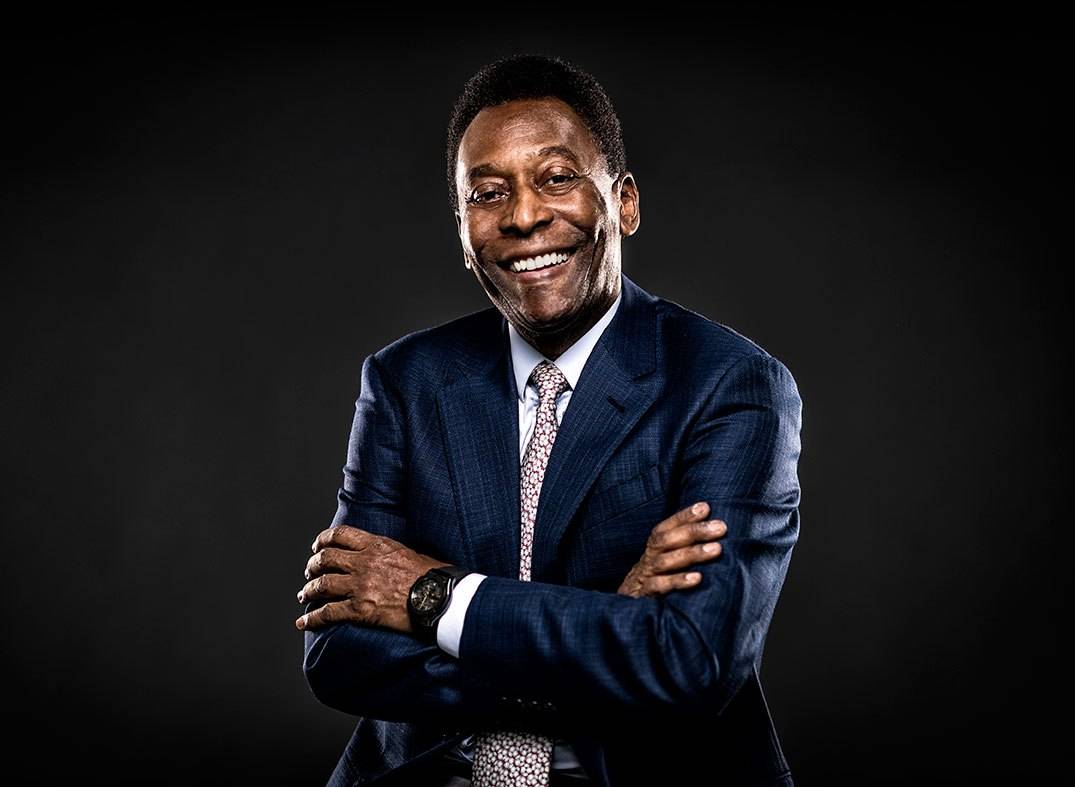
Although he has come to terms with the fact that he will never be in a competitive game again, Pelé continues to stay busy in his retirement, acting as a UNESCO Goodwill Ambassador and campaigning for policies to improve conditions for Brazil’s impoverished, including the anti-corruption “Pelé Law.” In his spare time, Pelé says he likes to keep a low profile and relax at his farm in rural Brazil, writing music, playing guitar, and penning books, including Pelé 10: What Makes a Great Play from The Master, The World Cup Murder, The FIFA 100, and his latest, Why Soccer Matters.
Throughout it all, Pelé’s has remained humble. “To play is a gift from God. But you must be careful to never you think you are the best. Always you must prepare yourself, training, and never to think you are the best.” That is the message Pelé likes to pass on to the kids, saying the most important thing is to be a good person. “With luck, you can play soccer until 35 or 40 years, but after that, you are left with yourself.”
 SIGN UP
SIGN UP

